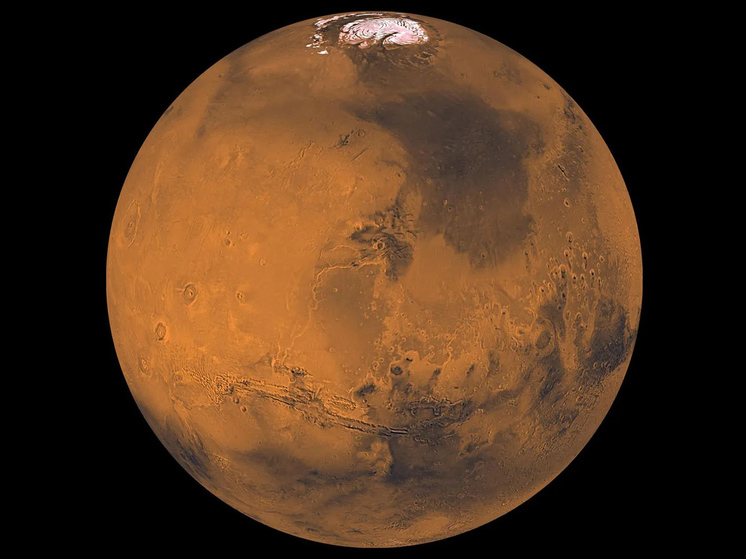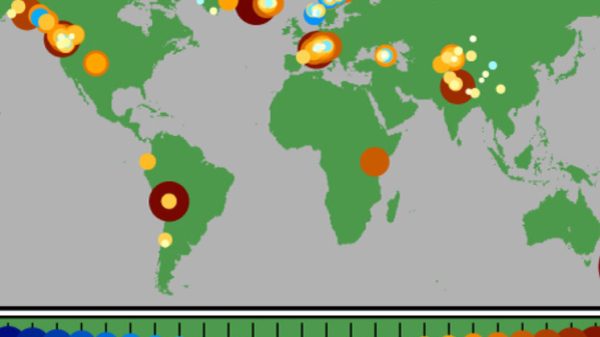Scientists surprised by new discovery
Mars is about 140 million miles from Earth, but the Red Planet influences our deep oceans, helping to create «giant whirlpools,» says new research.

Scientists analyzed sediments drilled from hundreds of deep-sea sites over the past half-century to peer tens of millions of years into Earth's past in an effort to better understand the power of deep ocean currents.
What they found surprised them, CNN notes.
The sediments examined showed that deep-sea currents waxed and waned over 2.4 million-year climate cycles, according to a study published Tuesday in the journal Nature Communications.
Adriana Dutkiewicz, co-author of the study and a sedimentologist at the University of Sydney, says scientists were not expecting to find these cycles, and that there is only one way to explain them: «They are related to cycles in the interaction of Mars and Earth as they orbit the Sun,» she said. . The authors say this is the first study to establish such connections.
The two planets influence each other through a phenomenon called “resonance,” which is when two orbiting bodies exert a gravitational influence on each other — this is sometimes described as a kind of harmonization between distant planets. This interaction changes the shape of their orbits, affecting how close to circular they are and their distance from the Sun.
For Earth, this interaction with Mars results in periods of increased solar energy, which means a warmer climate. and these warmer cycles correlate with stronger ocean currents, the report says.
While these 2.4-million-year cycles influence Earth's warming and ocean currents, they are natural climate cycles and are not related to the rapid heating the world is experiencing today as humans continue to burn fossil fuels to warm the planet, says Dietmar Müller, professor geophysicist at the University of Sydney and co-author of the study.
The authors describe these currents, or eddies, as “giant eddies” that can reach the deep ocean floor, eroding the seafloor and causing large accumulations of sediment, similar to snowdrifts.< /p>
Scientists were able to map these strong vortices through the “rifts” in the sediment cores they analyzed. Deep sea sediments form in continuous layers under calm conditions, but strong ocean currents disrupt this, leaving a visible trace of their existence.
Because satellite data that can visually map changes in ocean circulation have only been available for a few decades, sediment cores that help paint a picture of the past millions of years ago are very useful for understanding circulation changes in warmer climates, Mueller told CNN.
If today's anthropogenic warming continues on its current trajectory, Mueller says, “the effect will dwarf all other processes for a long time to come. But geological data still gives us valuable information about how oceans function in a warmer world.
The authors suggest that perhaps these eddies could even help mitigate some of the effects of a potential collapse of the Atlantic Meridional Overturning Circulation (AMOC), a crucial ocean circulation that operates like a huge conveyor belt transporting warm water from the tropics to the North Atlantic.
Scientists are increasingly sounding the alarm about the state of this critical current system. There are concerns that there may even be early signs that it is on the path to collapse as global warming warms the oceans and melts ice, upsetting the delicate balance of heat and salt that determines the AMOC's strength.
Collapse would lead to catastrophic climate consequences, including rapid declines in temperatures in some places and rises in others.
“Our work says nothing about what might or might not happen to the AMOC, Muller explains. – Rather, we are saying that even if the AMOC closes, there will still be other ocean mixing processes, although their consequences will be completely different.
There are concerns that the «shutdown» The AMOC would mean that oxygen-rich surface waters would no longer mix with deeper waters, resulting in a stagnant ocean largely devoid of life. «Our results suggest that more intense deep-sea eddies in a warmer world could prevent such ocean stagnation,» Mueller said.
Joel Hirschi, deputy head of marine systems modeling at Britain's National Oceanography Centre, who was not involved in the study, said the study's finding of a 2.4-million-year cycle in marine sediments was noteworthy. The methodology is robust and a connection to Mars is possible, he added.
But, as he commented to CNN, “the proposed connection to ocean circulation is speculative, and the evidence for deep ocean circulation associated with eddies is stronger.” in warm climates, few.»
Satellite observations have shown these vortexes have become more active in recent decades, but the currents don't always reach the ocean floor, he said, meaning they won't be able to prevent sediment from accumulating It remains unclear exactly how the various processes affecting deep-sea currents and marine life will evolve in the future, the study authors said in a statement, but they hope this new research will help build a better model of future climate consequences.





















































Свежие комментарии